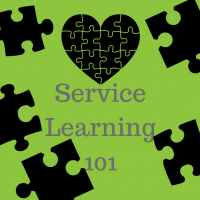In civil society, different people come together to form community. While differences may cause conflict, for the sake of the common good, we practice empathy and respect for others. We use literature to talk about how people from different perspectives see the same thing. We discuss how to communicate respectfully with someone of a different opinion and to seek common ground or compromise. The service project is to create posters that bring people together.
- Read more about Resolving Conflict with Respect - Elem
- Log in or register to post comments



